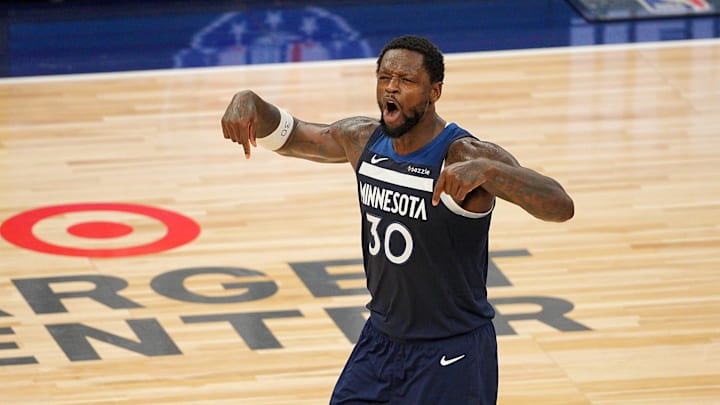The Minnesota Timberwolves and Julius Randle have agreed to a three-year, $100 million contract, securing Randle’s future with the franchise after a standout debut season.
Randle arrived in Minnesota as part of the blockbuster deal that sent Karl-Anthony Towns to the New York Knicks, essentially swapping All-Star-caliber forwards. In 69 games, Randle averaged 18.7 points, 7.1 rebounds, and shot 48.5 percent from the field, helping the Wolves close the regular season on a 25-5 run when he was in the lineup. He also became the fastest player in franchise history to tally 200+ points, 50+ rebounds, and 50+ assists in a single playoff run.
Now that Anthony Edwards is locked in for at least four more years and Naz Reid has re-signed on a five-year, $125 million deal, the Wolves have secured a formidable core. With the Randle extension complete, it’s time to evaluate how both teams fared in this trade.
Minnesota Timberwolves: A-
Committing to Randle long-term was always the plan — but far from a guarantee. He could’ve opted out and explored free agency, so keeping him was a priority from the moment the trade was finalized.
There were initial concerns about how Randle would coexist with Edwards, especially in terms of touches and offensive rhythm. But as the season progressed, the chemistry clicked. Randle willingly adjusted his role, embracing life as a secondary scorer who could explode at any moment rather than dominating possessions like he did in New York.
The result? A 49-33 finish, a sixth-place seed, and a playoff run that included series wins over the Los Angeles Lakers and Golden State Warriors — leading to a second straight Western Conference Finals appearance. Even though they were eliminated in five games by the Oklahoma City Thunder, the message was clear: this version of Minnesota could still win big without Towns.
New York Knicks: A
When New York acquired Karl-Anthony Towns, fan reaction was cautiously optimistic. Towns was a proven scorer and stretch big — something the Knicks had long lacked. Following their hard-fought second-round exit the year prior, GM Leon Rose knew a roster shake-up was needed.
Towns didn’t just live up to the hype — he exceeded it.
In 72 games, he averaged 24.4 points and 12.8 rebounds on 52.6% shooting from the field and a blistering 42% from three. With multiple 40-point games and a handful of clutch performances, he helped New York post back-to-back 50-win seasons and claim the No. 3 seed in the East.
In the playoffs, Towns delivered again: 21.4 points and 11.6 rebounds per game across 18 contests, helping the Knicks dispatch the Pistons and Celtics en route to their first Eastern Conference Finals appearance since 2000. Despite battling injuries, Towns pushed New York to six games against the Indiana Pacers before the run ended.
Towns didn’t just share the spotlight with Jalen Brunson — he expanded it. Now under team control for at least two more years, the Knicks look like legitimate contenders with their new big man in place.
Sometimes, a trade works out for both sides — and this one certainly did. Minnesota got the floor-spacing, tone-setting vet they needed alongside Edwards, while New York finally found a frontcourt star who fits their modern offensive identity.
This could be one of the rare win-win trades in NBA history.
